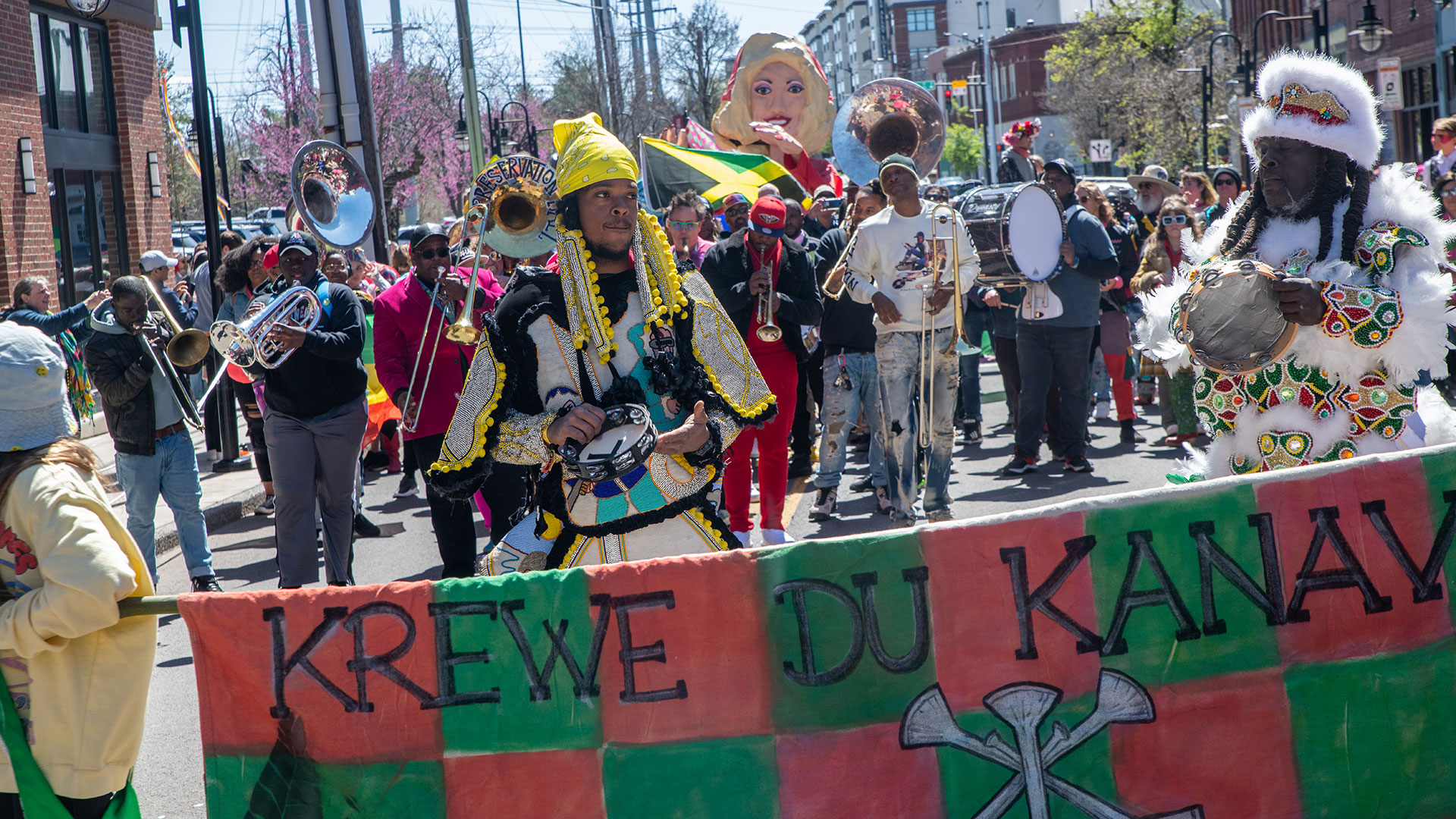
The Joy of Cattywampus
Since its inception in 2009, Knoxville’s Big Ears Festival has become one of the world’s foremost gatherings for music from outside the lines. But when it returned this year after a two-year COVID shutdown, it became something greater than a chance to hear music. Instead, it brought the Knoxville community together for a joyful, citywide celebration. Big Ears offers lessons in how to make joy happen for a whole town. This is the first of a three-part series in which Salvation South studies the Big Ears method.
In early 2020, Ashley Capps was on something of a career roll. He was in the process of selling his AC Entertainment company, producer of the Bonnaroo Festival and numerous venues across the mid-South. The sale left him with plenty of creative freedom and a decent measure of security. His 2019 Big Ears Festival, a 50th anniversary celebration of both ECM Records and the Art Ensemble of Chicago, had been a massive creative success, with record-setting attendance numbers for the festival. The 2020 fest was shaping up to be even bigger and better.
That was in the before time. Along with everything else, Big Ears went dark for 2020/21, two long, quiet years of that damned vita interruptus that had us all cooped up, bored, depressed, wary of and/or craving human contact, and – for many who contracted COVID or lost loved ones – worse.
During the quarantine, Capps had ample time to reflect on not just what he wanted to do when (if?) the festival resumed. A more existential question emerged: Why does he do what he does? What does this festival really mean?
In examining his multi-decade legacy of producing Bonnaroo and Big Ears (among other career achievements too numerous to catalog here), Capps came to understand what drives his work. It comes down to community building.
“That’s the real turn on for me,” he says. “I came to realize that it was the building of the community that really turned me on when it comes to doing festivals.”
“Community building” is an increasingly hackneyed phrase, trivialized by overuse in hustling everything from bespoke wristwatches to credit cards; still, there remain those whose work embraces a genuine commitment to this ideal. Capps is passionate about the “role that we can play in the community in creating a conversation about music and art, and the role that music and art can play in the community in terms of some of the obvious things – like quality of life – and some of the less obvious things, like bringing people together in a spirit of celebration and fueling peoples’ interests and ambition and sense of possibility about what you might do in life.” (emphasis mine)
In the case of Big Ears, community refers to two distinct-yet-overlapping groups: There is the festival community, people from around the world who travel to Knoxville for the chance to hear great music and enjoy the company of several thousand like-minded music nerds. (Mea culpa!) Then there are the Knoxville natives, the people who live in this town and either endure the invasion or ignore it entirely.
Only one-quarter to one-third of ticket holders are from the area, a figure Capps tells me is typical in his experience mounting festivals over his career. But as someone who has lived his entire life in Knoxville, he wondered if there might be some way to include more of his neighbors in the festival experience.
The solution: Mount a free festival alongside the ticketed rumpus, with many acts from the ticketed lineup providing free-to-all concerts for Knoxville locals. Go ahead and throw in a vastly expanded community engagement program along with – why not? – a couple dozen ticket scholarships to emerging artists.
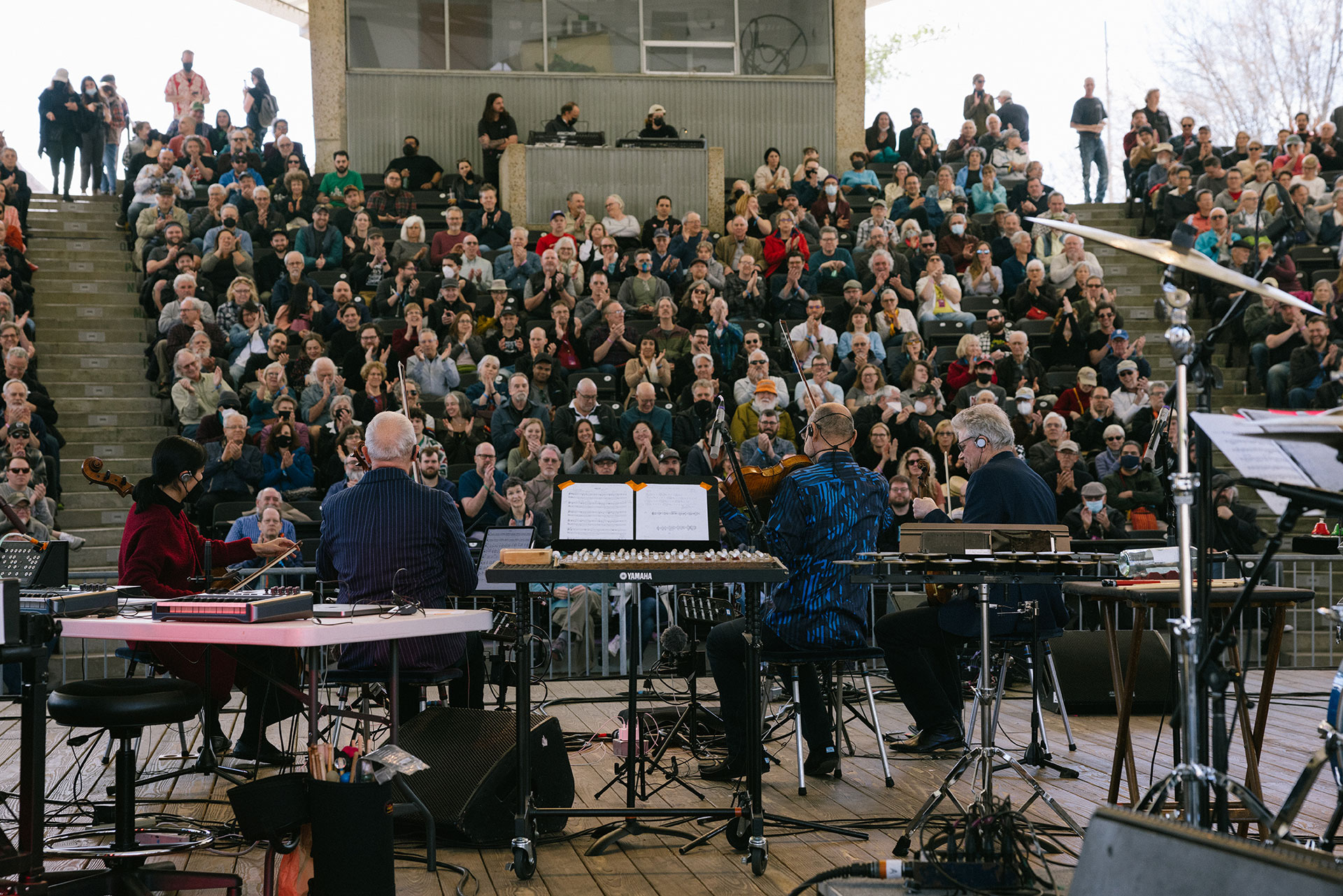
The festival kickoff concert was a standing-room-only, free admission affair, featuring Kronos Quartet and the So Percussion ensemble – plus Knoxville percussion collective Nief-Norf, guest vocalist (and Grammy winning composer) Caroline Shaw, and human beatbox Shodekeh. These champions of new classical (or contemporary, or whatever genre-du-jour plagues them) filled the Tennessee Amphitheater at World’s Fair Park with engulfing waves of sound. Gorgeously multi-layered – with nods to old time classical, new music oddity, and the Everly Brothers – it elasticized time and space so that a freight train passing nearby, horn blaring, seemed more planned tactic than a serendipitous gift of time and space.
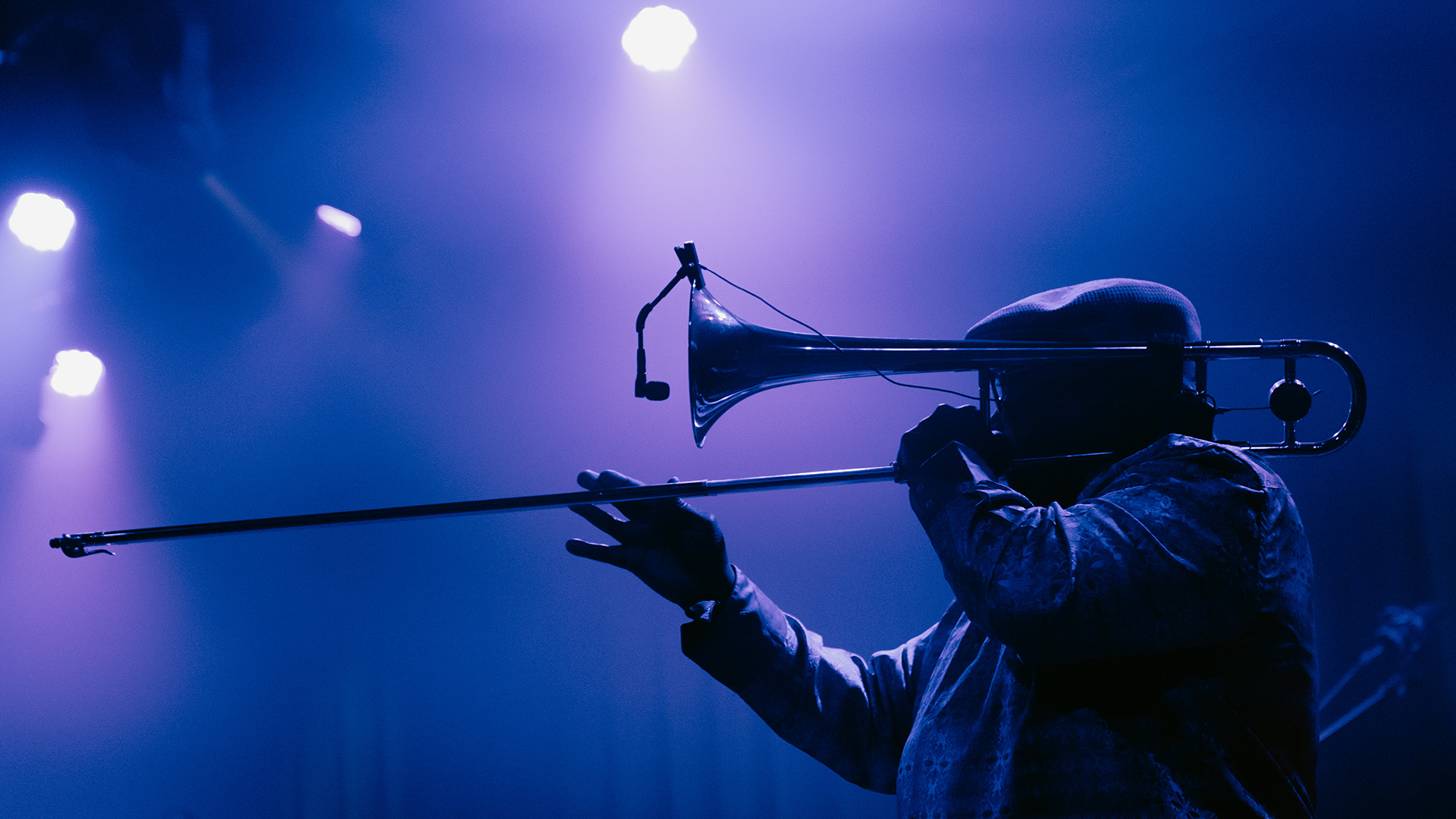
The Amphitheater hosted a baker’s dozen performances by artists like Damon Locks Black Monument Ensemble from Chicago; New Orleans killers Aurora Nealand, Sporty’s Brass Band, 79rs Gang, and the legendary heroes of Preservation Hall; and the Haitian steamroller known as RAM – essentially the Marley/Springsteen of Hispaniola – alongside a gourmet spread of Caribbean delights like Lido Pimienta, Lakou Mizik, and Dos Santos.
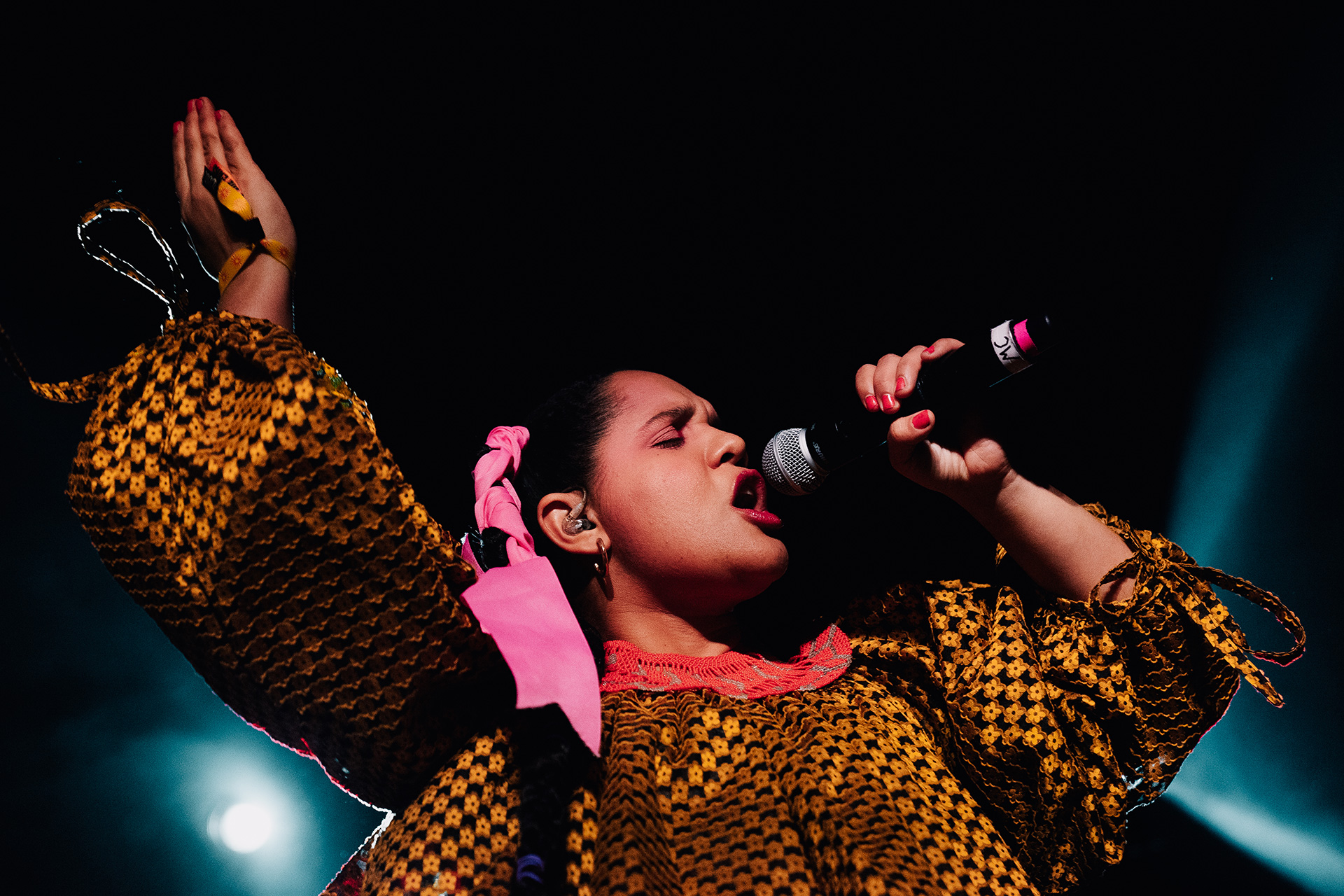
Just across the plaza, The Knoxville Museum of Art hosted an all-day Saturday/Sunday residency by Ensemble Dal Niente with Chicago composer/improviser Ken Vandermark. And if you didn’t mind a 15-minute drive, the Ijams Nature Center was suffused with Pulitzer-winning composer Ellen Reid’s immersive Soundwalk installation. All free.
Enough? Not hardly. The UT Downtown Gallery hosted four days of films like Lily Keber’s affectionate portraits of New Orleans (Buckjumping and Bayou Maharajah) and the world premiere of Tierra Sagrada, her collaboration with Ned Sublette that captures a Cuban Santeria ceremony. A quartet of films on dance and Moses Sumney’s concert film Blackalachia rounded out the cinematic freebies.
Finally, two of the nation’s most respected poet/essayists – civil rights icon Nikki Giovanni and 2021 MacArthur fellow Hanif Abdurraqib – filled the Mill & Mine for free readings on Saturday and Sunday mornings. The Giovanni appearance was especially poignant; co-hosted by the Beck Cultural Exchange Center, this triumphal return of a legendary hometown hero was sardine-can packed with old friends, next-gen acolytes, and an unmistakable contingent of Dr. Giovanni’s Delta Sigma Theta sorority sisters fully primed for some energetic “oop oop oop” call and response.
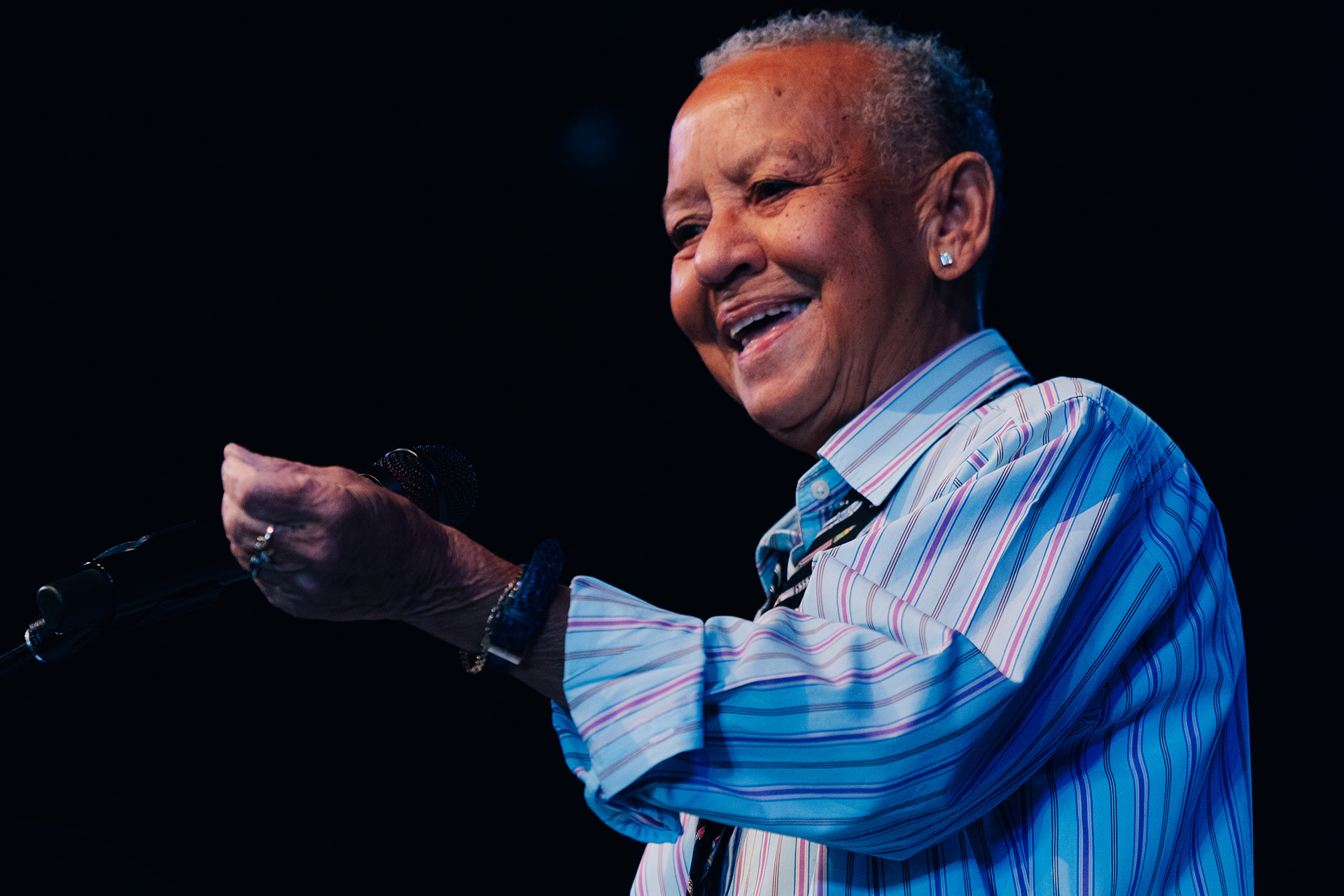
The Big Ears team estimates between 15,000-18,000 people attended these free events. Even though some of those (like me) were ticket holders, the effort to catch the ears of Knoxville was a success. Mission accomplished?
Almost. Beyond the pleasures to be found in listening to music that surely stretched the expectations of many in the audience, Big Ears offered locals a level of engagement beyond that of spectator: the joy of actively participating in the festivities.
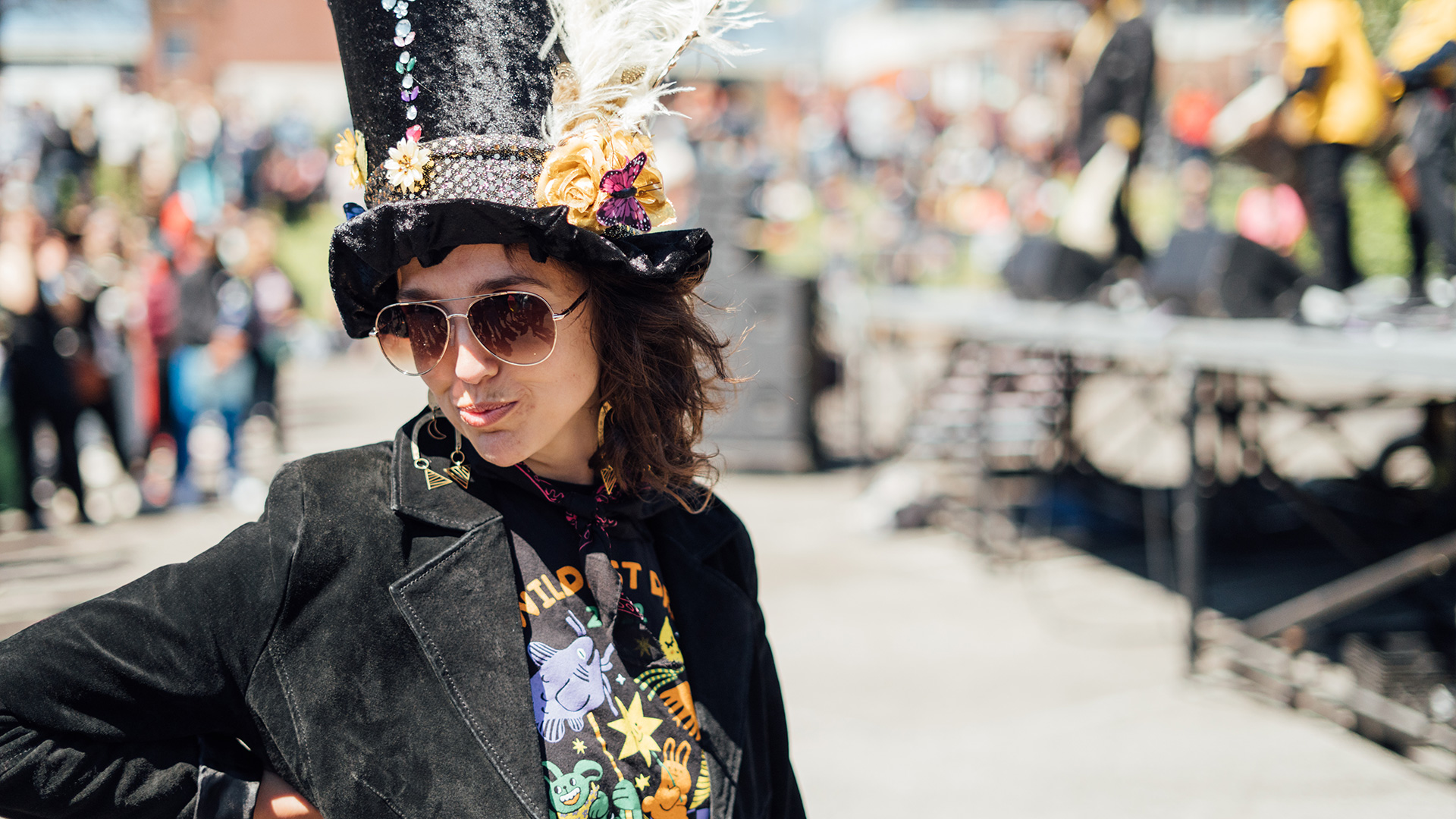
The capstone of the free festival is the Krewe Du Cattywampus Parade and Street Party scheduled for Saturday afternoon. This celebration of the shared traditions of New Orleans and Haiti – and now, evidently, Knoxville – featured the Preservation Hall Brass Band and Sporty’s Brass Band (among a dozen or so heavy hitters from NOLA) and a contingent of Haitian musicians performing at the fest. The folks at Cattywampus Puppet Council – a not-for-profit organization that has mounted these springtime parades since 2017 – is charged with organizing the parade and recruiting the community into the Big Ears fold. And vice versa.
On pre-fest Tuesday, I strolled out to St. James Episcopal Church to visit the final puppetry open workshop. The walk was eye-opening for this Knoxville enthusiast who had only ever visited the “best” part of town. A local warned me that half a mile in any direction from downtown Knoxville falls off the cliff. (Also, I am apparently crazy for walking around out there.) This verdict is overstated, but the distinction between the Knoxville of Big Ears and the city where roughly 190,000 people live their lives can be stark.
Downtown Knoxville is a shining example of what a fine, walkable city can be – clubs, theaters, restaurants, bars, shops and chic boutiques. The street scene is lively, and there is always something happening in the pedestrian-only Market Square: kids romping, buskers playing, young lovers strolling hand-in-hand. Less salutary: a mushrooming of wildly expensive luxury apartments with monthly rents starting at $2,000. But there is no denying: Downtown Knoxville is pretty fantastic.
"We went in back in January and started working with young folks, mostly in after-school programs. From the very beginning they got the parade theme in their hands and started brainstorming.”
A different Knoxville appears as you pass beneath the Interstate 40 flyover. Homeless encampments sprawl under the highway near a spread of missions and relief agencies. Farther north, rundown thrift and antique stores dot a mostly empty stretch of forgotten buildings. I passed only two people on foot; both asked for a handout. A couple of upstart breweries and bars herald the tip of gentrification’s spear. Proximity to Downtown combined with an abundance of inexpensive old buildings – hipster nests in waiting – adds up to bottom-line enticement that all but demands upscaling. For now, though, it’s someplace that people drive through to get somewhere else.
(The interstate’s demarcation between the bustling and tumbling sections of town is altogether too familiar in America. This multi-lane slab squashed what had been a coherent downtown with a considerable African American business and residential presence. Part 3 of this series will dig a little deeper into the impacts of urban renewal – aka “Negro Removal” – on Knoxville’s once-thriving African American community.)
At the puppet workshop, I found Cattywampus Executive and Artistic Director Rachel Milford scrambling to lay out art supplies and snacks. The church’s activity room quickly became a beehive of kids slinging paint, flinging glitter, and gluing fingers together. Amid this gorgeous and cacophonous whirlwind, Rachel described her organization’s partnership with Big Ears.
“The parade is the culminating event, but it’s really a five-month project,” she said. “This year we ran eight different sites leading up to the parade. We went in back in January and started working with young folks, mostly in after-school programs. From the very beginning they got the parade theme in their hands and started brainstorming.”
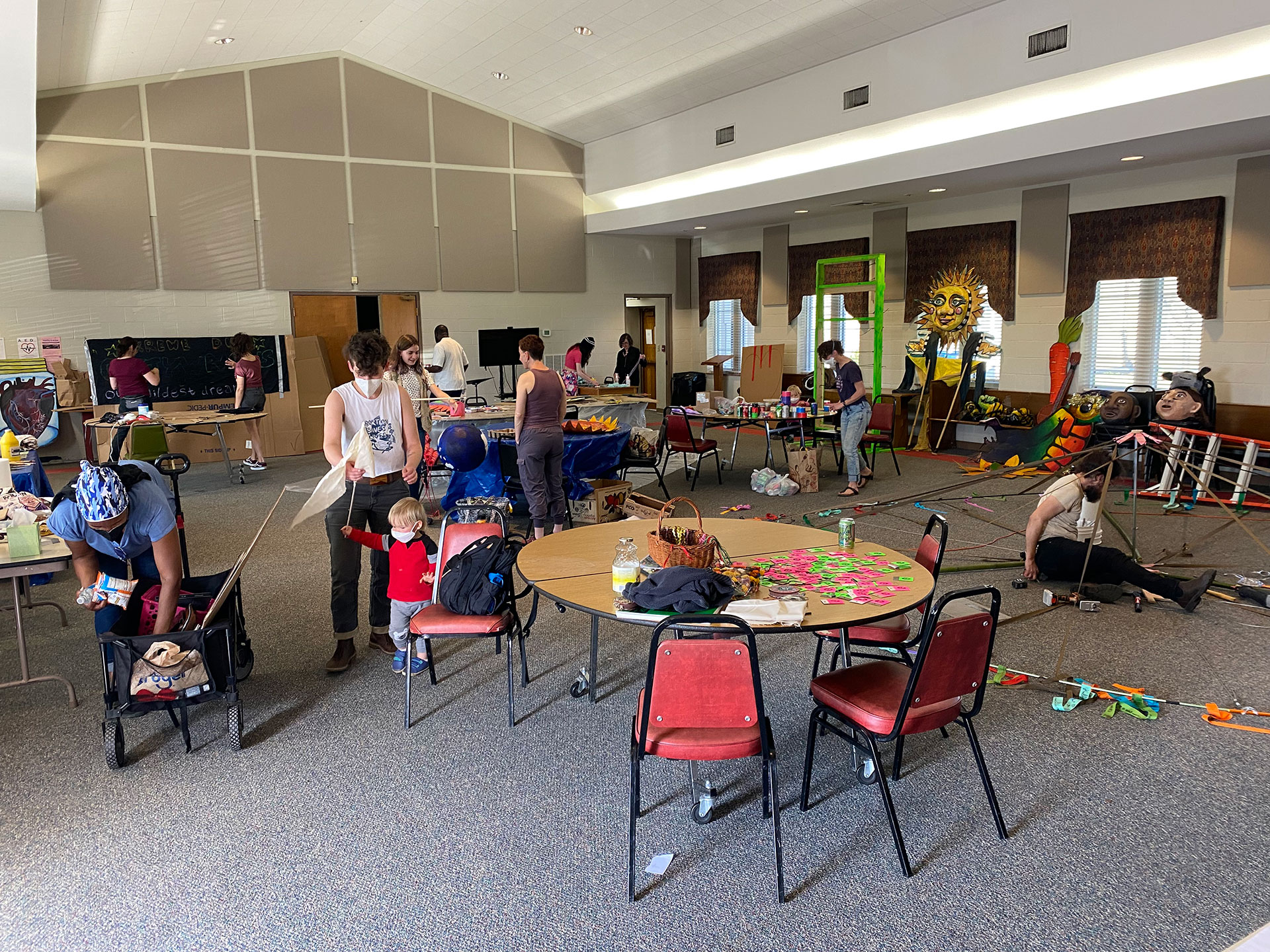
Working with community partners, including Centro Hispano, the Boys and Girls Clubs, and Canvas Can Do Miracles, Cattywampus assigned each site a teaching artist who visited once-a-week over two months to guide the work.
“From start to finish the kids get to conceive an idea of what they want to make – some sort of big puppet or other parade art. The culmination is they get to come to the parade with their art and show it off to the community.
“Big Ears reached out to us about a year ago and shared with us this intention they had to create stronger relationships with the community here,” Rachel continued. “So when they asked us if we could bring puppets, I said, ‘Hey, we’d be happy to bring puppets, but you know what would be really cool is if we actually did this whole project with the community. We could start and run these programs with young folks, really bring in a lot of community partners…”
Rachel paused and smiled in disbelief. “And they said yes.”
Rachel pointed out that with “[t]he price point of the tickets and the more experimental types of music, I think there are multiple ways in which it’s been unfamiliar to folks…but this [is a] really sweet way to bring a lot of community members into the festival who I don’t think necessarily would ever be here.”
Just then, a few of the Preservation Hall guys stopped in to give the kids a quick motivational mini-concert. It’s likely that none of the kids – and few of the adults – had any notion of the rich heritage paying them a visit. All they knew was there was a raucous band of musicians lifting their playhouse roof with enough joy and life spark to power a mid-sized Southern city for an evening.
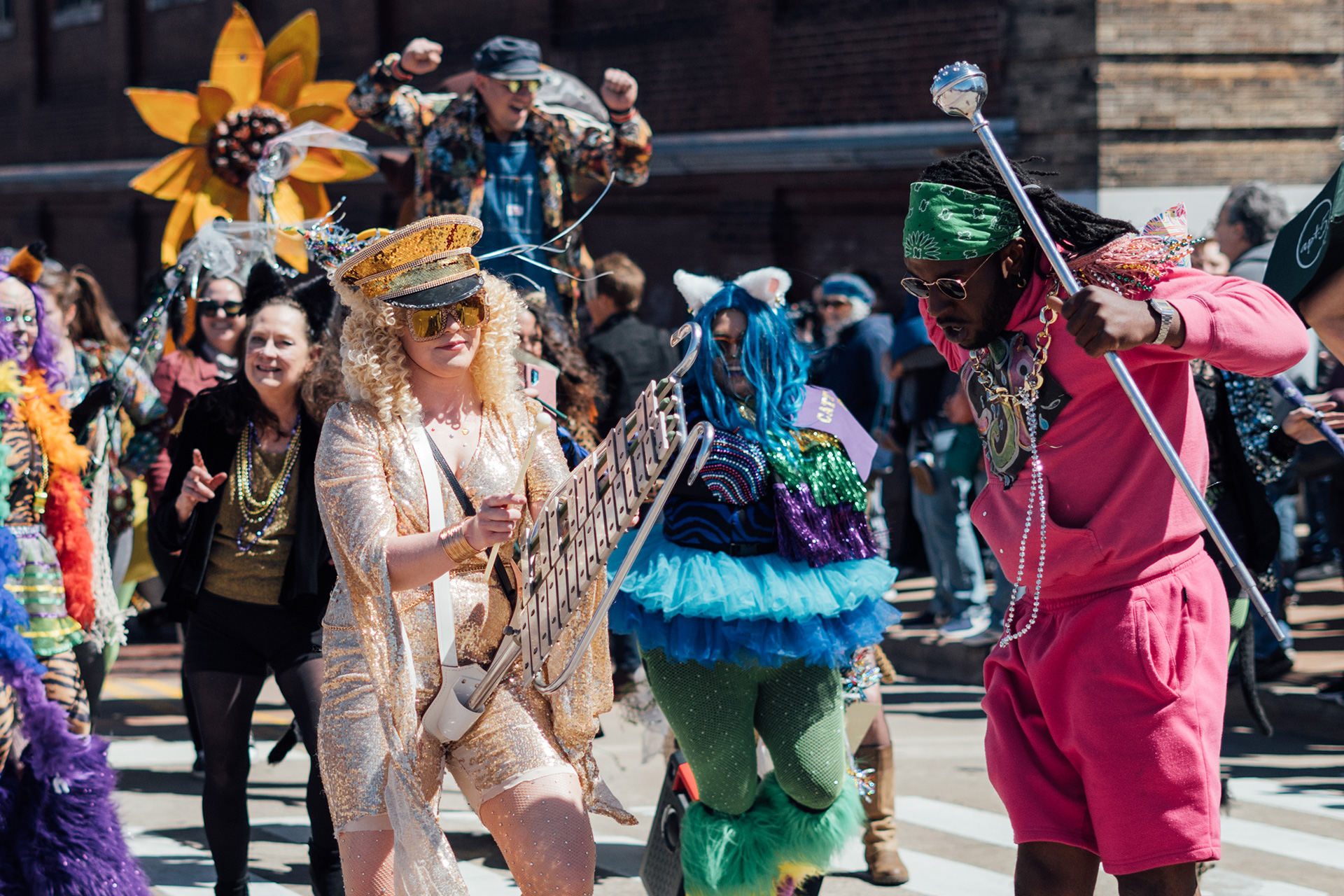
The big finale came on Saturday, a blue-sky day with brutal wind that threatened to take the slightest among us off our feet. Undeterred, several hundred locals and renowned musicians lined up behind the Preservation Hall Brass Band. There were dozens of brightly colored puppets, including a bigger-than-life Dolly Parton that required three wranglers; Mardi Gras Indians in full bead-and-feather regalia; a local West African drum troupe; a full complement of Haitian all-stars; and a contingent of high school marching band members led by NOLA saxophonist Aurora Nealand. This glorious, ragtag pageant marched past a crowd of thousands of festival goers and Knoxville locals, with a throng of roughly 7,000 people eventually making their way to the old rail station for the big street jamboree. It stomped, y’all.
~~~
It’s easy to fall in love with a place you visit on holiday. The food and drink are fine, everybody is in a good mood. Naturally, any town aspiring to robust tourism will put its best foot forward. But when the party ends and we visitors head home, the community – its good points and bad – remains.
I shared some hard observations about Knoxville. Here are a few more. The poverty rate hovers around 25 percent, well above state and national averages; for Black residents, 42 percent live below the poverty line. City officials acknowledge around 800 homeless; other estimates suggest 1,500-plus is more likely. Median pre-tax income is less than $40K; average yearly rent is $14K, up 20 per cent since 2019 and climbing steadily. The average cost of a house is in the mid-$300,000 range. With the working class increasingly priced out, a third of homelessness is attributed to insufficient affordable housing.
Air and water quality rankings are poor, and the nearby Oak Ridge National Laboratory – production site of the first atomic bombs – remains a source of contamination and associated health impacts. I spoke to a woman in her 30s whose parents had worked at Oak Ridge; she suffers ongoing chronic health issues due to their exposure.
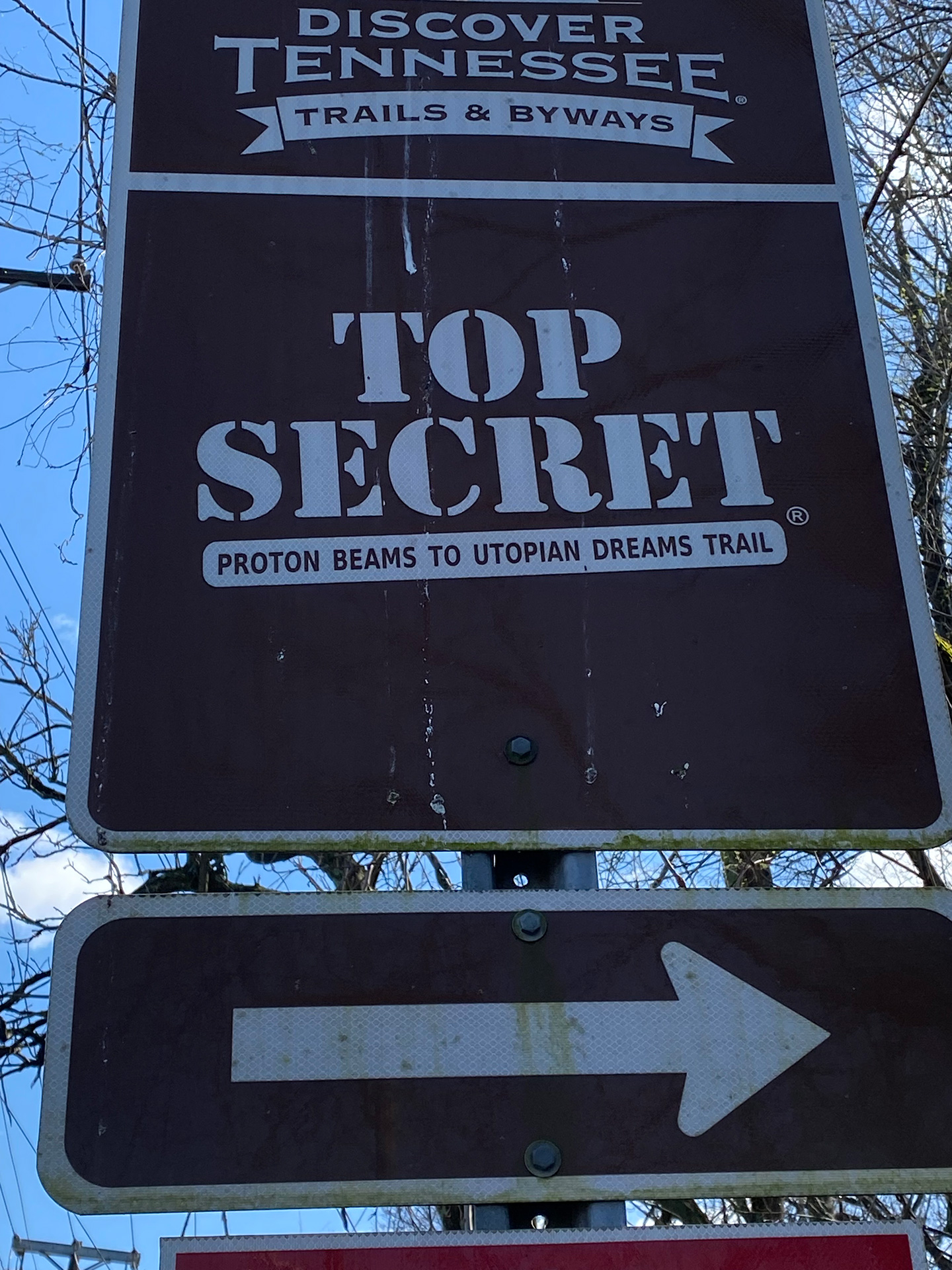
Aside from Oak Ridge, these problems are not unique to Knoxville, and to be fair Knoxville has more to brag about than your average mid-sized Southern city. But none of that makes the situation any less dire for folks on the short end of the stick.
I honestly love this town. The surrounding area is as gorgeous as any place on Earth, despite the questionable environmental stewardship. It remains on my short list of possible retirement destinations for one big reason: Knoxville actively honors and supports the central role of the arts in a healthy community.
Rachel of Cattywampus emphasized the Big Ears organization’s “intention to make the festival a place for joymaking and celebration and play. That’s our wheelhouse. That’s what Cattywampus is all about. We’re all about providing a vehicle for our community to be making together, building relationships, telling their stories, and collaborating with one another. We think that joymaking, and play, and art making is pretty radical stuff, and part of what we as humans need to fuel us to be in the world we’re in right now. I mean, it’s pretty tough out here. I think any opportunity to get together as a community and just play and celebrate is pretty profound.”
Sure, no performance will build affordable housing or clean up nuclear contamination. But a performance – or group of kids slinging paint, or a gaggle of highschoolers learning an instruments – generates energy and spark that, channeled creatively, can make a lasting difference in the vision a community holds for itself.
To be hopeful in bad times is not just foolishly romantic. It is based on the fact that human history is a history not only of cruelty but also of compassion, sacrifice, courage, kindness. What we choose to emphasize in this complex history will determine our lives. If we see only the worst, it destroys our capacity to do something. If we remember those times and places--and there are so many--where people have behaved magnificently, this gives us the energy to act, and at least the possibility of sending this spinning top of a world in a different direction. And if we do act, in however small a way, we don't have to wait for some grand utopian future. The future is an infinite succession of presents, and to live now as we think human beings should live, in defiance of all that is bad around us, is itself a marvelous victory."
— Howard Zinn, “The Optimism of Uncertainty”
As the late Dr. John used to say, “It matters a difference.” It is damned hard to feel hopeless with the Preservation Hall Jazz Band raising the rafters. That hot spark of possibility is essential to building a better tomorrow.
In our next installment, more with the Pres Hall gang and a look at the wonderfully expansive creative practices of Aurora Nealand and Jebney Lewis.
Until then, how about let’s indulge in a little hope. Reckon we can all use it.

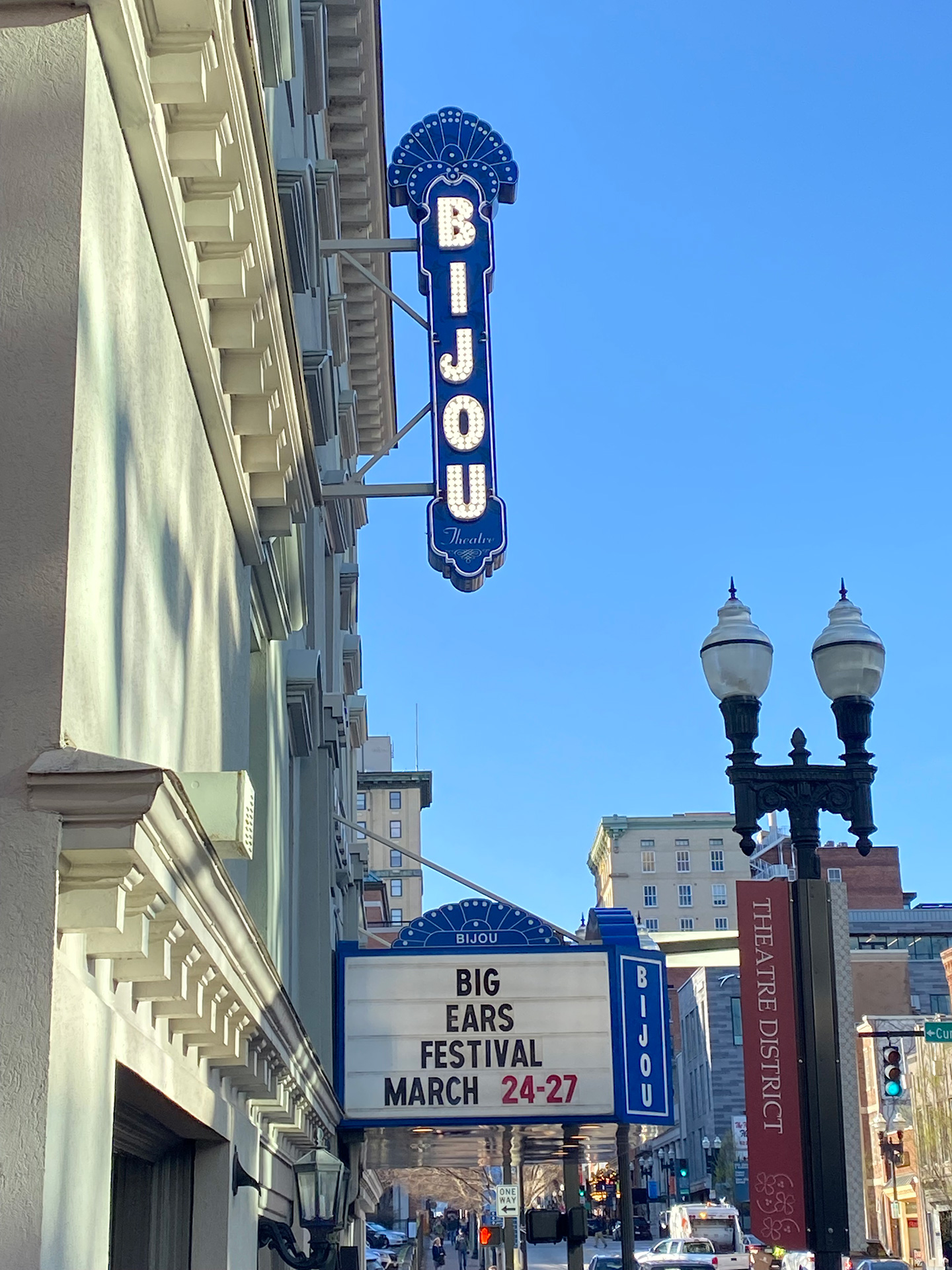
I just finished reading installment one of the Big Ears article. Well said. On Saturday morning of the festival, early, I took a walkabout to the far side, beneath the interstate underpass to see what I could see…because I have often found that the true nature of a city is found in those sidewalk cracks – looking down, deep past the microbreweries, James Beard nominated restaurants, and the vintage, milk-fed, girl-next-door ice-cream dippers at Cruz Family Farm. A nice young man stopped his car and advised that I turn back – that there wasn’t much to see…and that a few blocks ahead, near the Greyhound station, things could get a bit rough. I smiled, thanked him, and continued walking.
I grew up in East Coast inner cities. Walked Manhattan in the wee hours as a 14 year old. Relying on my spidey sense and common sense, I knew when to cross the street. Nothing happened. I nodded at a homeless man in a doorway and stepped over discarded masks and tooth flossing thingies. Eventually I turned around in time to catch another of those free events. This time at Jackson Terminal. Sitting on a bench running along the wall a young black teen sat next to me. He asked if this was my first show and I said no, that it was day 3 of this musical madness. A resident of Knoxville, he confessed that he had never heard of Big Ears, but his high school music teacher (oh wow, they still exist) told him about the festival and encouraged him to attend. Together we tapped our feet and nodded our heads and when it was over I pointed him in the direction of another free event.
This is what I want for Big Ears…. An opportunity for young people to hear the notes and words; feel the rhythms and their absence: to see, feel, and hear the creativity that extends past the television or their radio.
I would hate for Big Ears to stagnate and become a festival of the elite, but if it can continue to inspire creative passion to those yet familiar, well that’s a cattywampus.
Part two, coming this Friday, deals more specifically with the opportunities for young people. I think you’ll definitely enjoy the next installment.
Hey there CNOON. Thanks a ton for the close reading and the thoughtful response.
rr-k
The story continues…